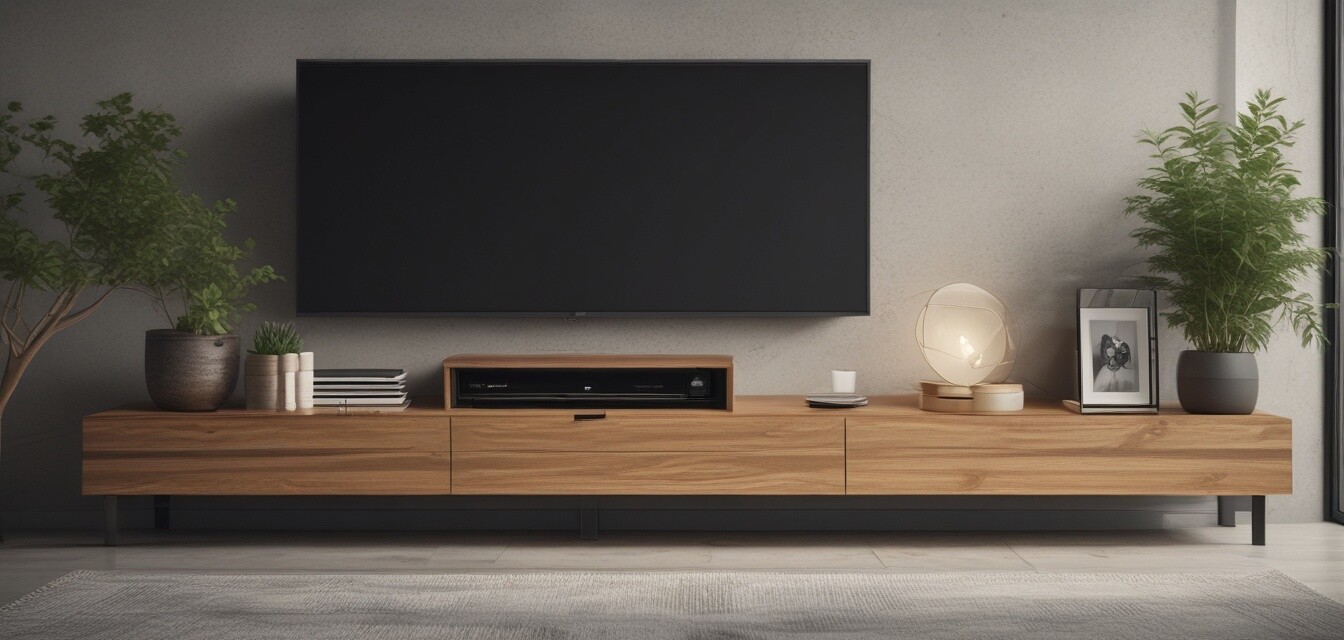
The Circular Economy and Its Impact on Furniture Design
Key Takeaways
- The circular economy encourages reducing waste and reusing materials to promote sustainability.
- Innovations in sustainable furniture design, including TV stands, focus on eco-friendly materials and manufacturing processes.
- Consumer demand for green products is shaping the future of the furniture industry.
The concept of the circular economy is gaining significant traction across various industries, including furniture design. This approach emphasizes sustainability, focusing on reducing waste, reusing materials, and recycling products throughout their lifecycle. In this article, we will explore how the circular economy is transforming furniture design, specifically in the realm of sustainable TV stands and other media storage solutions.
Understanding the Circular Economy
The circular economy model differs markedly from the traditional linear economy, which follows a "take, make, dispose" pattern. The circular economy aims to create a closed-loop system where waste is minimized, and resources are reused. Here’s a comparison between the two models:
| Aspect | Linear Economy | Circular Economy |
|---|---|---|
| Resource Use | Extract, consume, and dispose | Reuse, refurbish, recycle |
| Waste Management | Landfill, incineration | Minimal waste generation |
| Economic Model | Sustainability is secondary | Focus on sustainability and resilience |
The Rise of Sustainable Furniture Design
With increasing awareness of environmental issues, consumers are increasingly seeking sustainable alternatives in their purchasing decisions. This shift has propelled furniture manufacturers to embrace the principles of the circular economy through innovative design and responsible sourcing of materials.
Innovations in Materials
Sustainable furniture design is increasingly focusing on eco-friendly materials, which can be categorized as follows:
- Recycled Materials: Many manufacturers are now using recycled woods, metals, and plastics in their designs.
- Bamboo: Fast-growing and renewable, bamboo is a popular choice for sustainable furniture.
- Sustainable Wood: Certified timber from well-managed forests is preferred to ensure responsible sourcing.
Design for Longevity
Another emphasis in the circular economy is durability. This means designing furniture that can withstand wear and tear over time, reducing the need for frequent replacements. Features such as modular designs, which allow for easy upgrades and repairs, are also becoming more common in the industry. Check out our guide on buying sustainable furniture to gain insights into making eco-friendly choices.
The Impact on TV Stands and Media Storage Solutions
Sustainable TV stands are a significant focus of this movement. As people invest in home entertainment, TV stands play a crucial role in maintaining both aesthetic and ecological standards. Many manufacturers are now creating TV stands with sustainability in mind, featuring:
- Eco-friendly finishes that minimize harmful chemicals.
- Space-efficient designs that offer functionality without utilizing excessive materials.
- Modular features allowing for easy disassembly and repairs.
Consumer Trends in Sustainable Furniture
Recent surveys indicate a growing consumer preference for sustainable products, influencing manufacturers to adopt eco-friendly practices. This has led to rising investments in sustainable furniture brands. Below are some key consumer trends marked by recent studies:
| Trend | Description |
|---|---|
| Increased Demand | More customers actively seek sustainable furniture options when shopping. |
| Online Research | Consumers conduct thorough research on products' sustainability before purchasing. |
| Brand Loyalty | Brands with eco-friendly initiatives are gaining customer loyalty and trust. |
Challenges and Opportunities Ahead
While the circular economy presents a wealth of opportunities for furniture manufacturers, it also brings challenges. Ensuring a supply chain that can support sustainable practices and balancing cost while maintaining affordability will be essential for widespread adoption.
Future of Sustainable Furniture Design
As awareness of environmental issues grows, the demand for innovative and sustainable furniture design will continue to increase. Furniture brands are investing in research and development to explore new materials and manufacturing processes that align with the principles of the circular economy. Explore our news and trends section for insights into what’s coming next in the sustainable furniture world.
Pros
- Promotes environmental sustainability
- Encourages innovation in design
- Creates long-lasting, durable products
Cons
- Higher manufacturing costs can lead to increased prices
- Limited availability of truly sustainable materials
Conclusion
In conclusion, the circular economy is reshaping how we approach furniture design, encouraging brands to prioritize sustainability and innovation. As consumers lean towards eco-friendly options, manufacturers must adapt to set new industry standards. By embracing this model, both consumers and producers can enjoy the benefits of a sustainable future. Keep following us for more insights as the world of sustainable furniture continues to evolve.